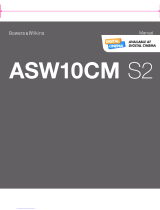
Advanced tips
Adding products by dragging them from the Resource Bar
The most flexible way of adding products is to drag an appropriate
icon from the Resource Bar (to the left of the Products page)
onto the Products page:
Fetching settings from a product
If you have changed any settings on a product from the front
panel since making a previous configuration, you can retain the
settings by using the Meridian Configuration Program to fetch the
configuration from the product, rather than starting from a default
configuration as described above. This is also useful if you cannot
locate the file on the computer.
• Connect a serial cable between the product and your PC, as
described in
To connect the serial cabl e
, page 23.
• When the Fetch from Product dialogue box is displayed click
the Ye s button.
Performing other actions
Right-clicking on most objects on the Products page displays a
context menu of actions appropriate to that object:
For example, to delete a product:
• Right-click the product, then click Delete on the context menu.
Note: If you delete the controller you will need to restart the
configuration from scratch.
Displaying or changing product properties
Many products provide a range of properties that you can change
for specific situations. To display the product properties:
• Right-click the product, then click Properties on the context
menu, or double-click the product.
T h e Properties dialogue box shows a list of the properties
associated with the product, and allows you to view or change
their values:
For detailed information about each of the properties refer to the
Configuration chapter
in the
Installation Guide
for the product,
or the FAQs section in the on-line help. To display this click
Configuration Program Help on the Help menu.
8
Quick tour
























